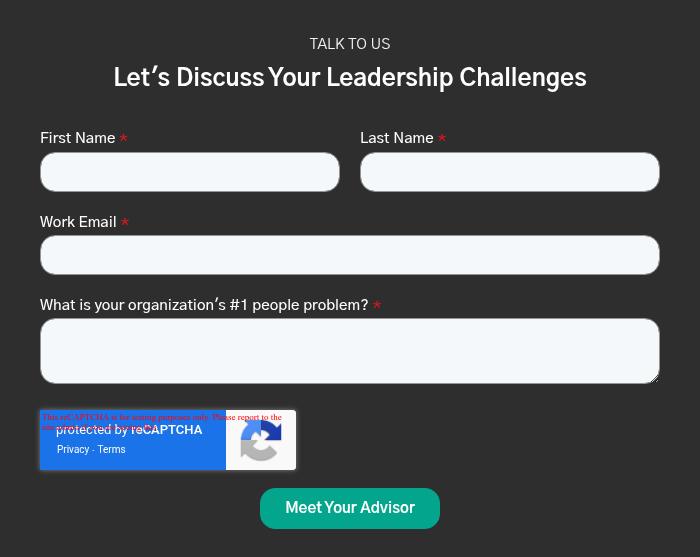Approaches for Developing High-Potentials: Investing in the Future of the Organization
November 26th, 2025
3 min read
By John Gave

Every executive has repeated the same refrain: an organization’s most valuable asset is its people. This statement is accurate, yet its repetition can obscure a deeper truth. Within the broader population of employees, high-potential individuals—or “high-potentials”—stand apart. These are the employees whose capacity for growth, adaptability, and impact far exceeds that of their peers. They do not simply represent organizational talent; they represent its future. The critical question for leadership is how to identify, invest in, and fully develop this unique asset.
Many organizations claim to value their high-potentials, yet struggle to implement strategies that match the magnitude of this asset. The most forward-thinking companies recognize that competitive advantage is rooted in the ability to attract, retain, and elevate these individuals. Failing to do so means losing the very talent that will drive future innovation, operational excellence, and market leadership.
This article provides a clear roadmap for building a systematic approach to high-potential development, from targeted recruiting and precise identification to deliberate exposure, mentoring, and specialized development programs.
In this article, you will learn:
- Building a High-Potential Talent Pipeline: Recruiting and Attracting the Best
- The Importance of Identifying High-Potential Employees
- Business Exposure and Rotational Programs: Rounding Out Future Leaders
- Mentoring High-Potentials: Accelerating Growth Through Experience
- Developing High-Potentials with Tailored Programs
Building a High-Potential Talent Pipeline: Recruiting and Attracting the Best
Developing high-potential talent begins before the employment contract is signed. A strategic recruiting process is essential to consistently bring in individuals with exceptional promise. This process may involve building relationships with top universities, recruiting directly from elite graduate programs, or targeting competitors’ rising stars. High-potential candidates are not always easy to spot on paper; they reveal themselves through ambition, adaptability, intellectual curiosity, and the capacity to lead.
Organizations should not rely solely on traditional hiring assessments or rigid search firm protocols. Instead, they must invest in processes that reveal both the intelligence quotient (IQ) and emotional intelligence (EQ) of candidates. Effective recruiting balances technical acumen with the interpersonal skills and learning agility that signal future leadership potential.
The Importance of Identifying High-Potential Employees
Many companies hesitate to explicitly label high-potential employees. Some fear it will create divisions or resentment within the workforce. However, clearly identifying high-potentials is critical for both organizational clarity and employee engagement. When a company knows who its emerging leaders are, it can intentionally invest in their development. For the individuals themselves, recognition brings heightened expectations and greater visibility. This level of scrutiny is not for everyone, and that reality is self-selecting. Those uncomfortable with being singled out for their potential are unlikely to thrive in these roles.
The process of identification should be objective and data-driven, combining performance metrics, leadership assessments, and peer feedback. The Metiss Group recommends integrating these assessments with regular employee performance reviews, providing a clear, ongoing picture of individual growth trajectories and readiness for new challenges.
Business Exposure and Rotational Programs: Rounding Out Future Leaders
A high-potential employee’s true value emerges through experience across functions and disciplines. Rotational programs are the most effective vehicle for exposing these individuals to the broader workings of the business. By working in operations, marketing, finance, and other departments, high-potentials develop a holistic understanding of the organization and are better equipped for future leadership roles.
This approach also strengthens retention. Employees given opportunities to explore and expand their skill sets feel more engaged and see a path for advancement. The Metiss Group has found that organizations with well-structured rotational programs are more likely to retain high-potential employees and accelerate their development into strategic leadership roles.

Mentoring High-Potentials: Accelerating Growth Through Experience
Mentorship remains one of the most effective tools for accelerating high-potential development. A mentor, ideally a senior leader with deep organizational and industry experience, can provide invaluable guidance. These relationships create a channel for sharing hard-earned lessons, offering candid feedback, and helping high-potentials navigate the complexities of executive decision making.
Mentoring also provides high-potentials with a sense of organizational belonging and access to unwritten norms and strategies for success. Structured mentorship programs, combined with regular feedback sessions, increase accountability and foster a culture of continuous learning and leadership development.
Developing High-Potentials with Tailored Programs
Not all development programs are created equal. High-potentials warrant a different level of investment. This does not mean isolating them from the rest of the workforce, but rather providing access to leadership training programs, executive leadership coaching, and challenging assignments that stretch their abilities.
Organizations should offer opportunities such as intensive leadership development classes, participation in strategic projects, and attendance at leadership development camps. These investments reflect the organization’s recognition of high-potentials as its most valuable future assets. In return, these individuals should be held to higher standards and expected to contribute to shaping the company’s direction and culture.
Takeaways
High-potential employees are the cornerstone of any organization’s future success. To fully leverage this asset, organizations must recruit for potential, objectively identify emerging leaders, expose them to all facets of the business, assign seasoned mentors, and invest in robust, tailored development programs. These steps not only accelerate individual growth but also strengthen the organization’s bench of future leaders.
By adopting a deliberate approach to high-potential development, companies position themselves to achieve their most ambitious strategic objectives and secure long-term growth. The organizations that consistently succeed are those that treat their high-potentials not as an afterthought, but as the foundation of their competitive advantage.
